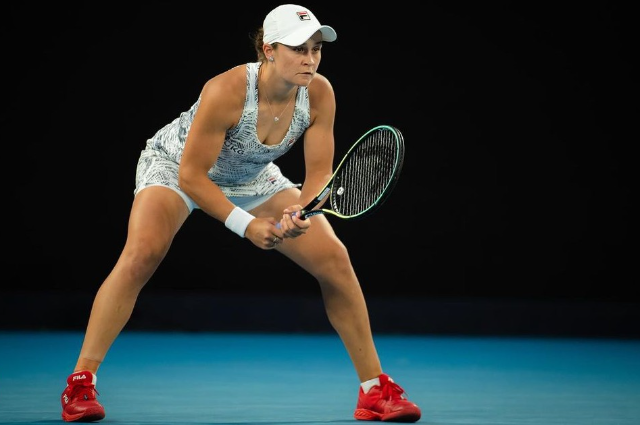Ashleigh Barty, the 25-year old tennis player from Australia made sporting history earlier this month when she won the Australian Open becoming the first Australian woman in 44 years to win the title. It was a big title drought that Barty quenched for the nation, and Australia is celebrating the achievement. Rightfully so.
Usually described as composed in her on-court behaviour, Barty, after her match-winning shot against her American opponent Danielle Collins in the Rod Laver Arena, let loose a feral roar that drowned in the cheers of an exultant crowd. “A destiny is fulfilled”, proclaimed the commentator as Barty and Collins shook hands, and Barty proceeded to the centre of the arena again and roared. Rightfully so.
Competitive sports such as tennis call for supreme physical fitness. Players train rigorously and it is a given that they display determination, courage, and perseverance under conditions of extreme pressure. Ash Barty is to stranger to such pressures. The current World Number 1, Barty also had a promising junior career in tennis where she reached a career-high of World Number 2. She turned professional in 2010 at the age of 14 and had a good run for four years. In 2014 however, she took a break from professional tennis citing things were happening too quickly for her from a young age.
Then she did something not very usual. She turned a cricketer. Cricket was a part of Barty’s way of getting her mental health back on track. It was a courageous decision to step away from a sport in which she had invested all of herself. It was a good decision too, for it helped avoid a total burnout that professional sports are notorious for.
By prioritising her mental health over merely competing at all odds, Barty has underscored the reality that a sport can only ever be a part of a sportsperson’s life; it should never be their entire life. David Foster Wallace was a much-loved American writer who was also a tennis player of merit in his younger days. Coincidentally, Wallace suffered from depression for much of his adult life; his blurb for the 1996 book Tennis and the Meaning of Life: A Literary Anthology of the Game reads: My only complaint is the title’s redundant. The almost-aphoristic blurb takes the cake and the entire patisserie!
“Beauty is not the goal of competitive sports, but high-level sports are a prime venue for the expression of human beauty,”wrote Wallace again in the 2010 book 'Philosophy and Tennis: What the Racket is All About'. Wallace is talking about kinetic beauty here that arises from one’s understanding and acceptance of one’s body. It is this acceptance that grants us the grace to seamlessly do things with our bodies, which in the case of spectator sports like tennis becomes an object of scrutiny.
Ash Barty is right at home in her body on a tennis court, and this was made ever so evident in her run-up to the Australian Open Finals this month where she scripted history. At 1.66m tall, Barty is rather short for tennis. But that has never stopped her from strengthening and displaying her on-court skill; she has an excellent serve and is an all-court player with a range of shots she smartly picks from.
Now, where does this beauty, philosophy, and sport fit in in the grand scheme of life as we know it? Answer: smack dab at the centre of it! We as a collective people alternate along a broad-spectrum life of quiet desperation (Henry David Thoreau) to noisy desperation (James Thurber) to a mindless-what-on-earth-am-I-doing desperation. While the Socratic clarion call 'only the examined life is worth living' still holds true, what may be in order here is a little tweaking. Writing in a 2010 issue of Sports, Ethics and Philosophy, Bill Morgan argues that a wholehearted engagement in some activity is the basis of a good life. He says a wholehearted engagement is by its own nature reflective, and thus confers on us a sense of purpose that human beings so very (in)famously crave. Morgan’s main contention in this article is that sports pave the way for a good life because they instill in us a sense of values. He calls them internal goods. These are those traits that align with one’s athletic endeavours and therefore make the pursuit of the sport worthwhile and wholesome.
Ash Barty. Yes, we are still on Ash Barty. Barty clearly depicts she has these internal goods in plenty. These must have been the goods that motivated her to care for herself first instead of sacrificing herself needlessly to the sport. And these must have been the very goods that scaffolded her comeback to give her best to the same sport. Barty’s on-court soft smile and assured demeanour tell us this is a player who knows where she has come from, and has the ground solid and firm beneath her feet. They tell us this is a player who is looking inward even as she has her sight fixed outward on the tennis ball. Lastly (but not in the least), they tell us this is a player who is wholeheartedly enjoying her engagement with life. And rightfully so.

